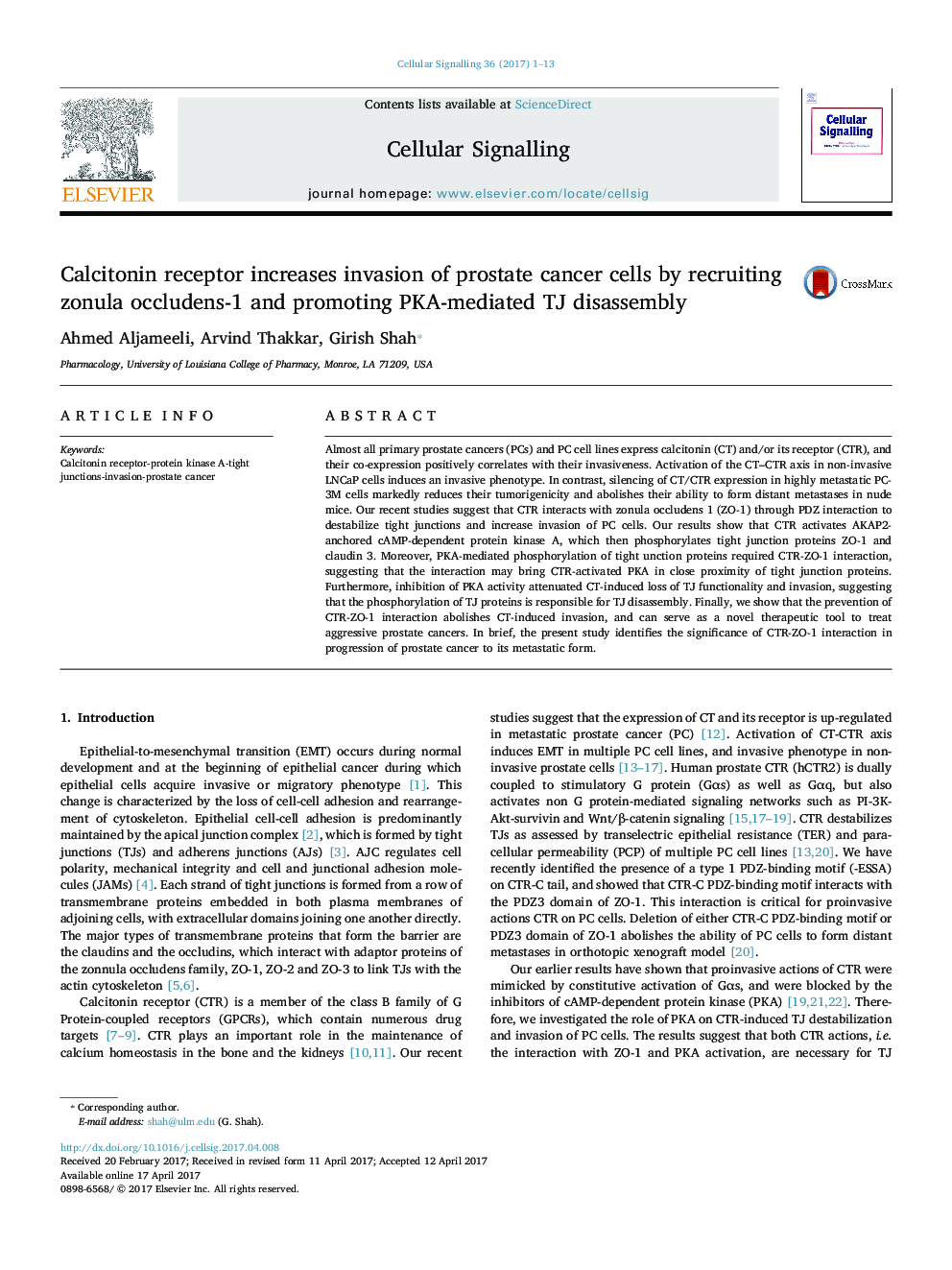| کد مقاله | کد نشریه | سال انتشار | مقاله انگلیسی | نسخه تمام متن |
|---|---|---|---|---|
| 5509210 | 1538508 | 2017 | 13 صفحه PDF | دانلود رایگان |
عنوان انگلیسی مقاله ISI
Calcitonin receptor increases invasion of prostate cancer cells by recruiting zonula occludens-1 and promoting PKA-mediated TJ disassembly
دانلود مقاله + سفارش ترجمه
دانلود مقاله ISI انگلیسی
رایگان برای ایرانیان
موضوعات مرتبط
علوم زیستی و بیوفناوری
بیوشیمی، ژنتیک و زیست شناسی مولکولی
زیست شیمی
پیش نمایش صفحه اول مقاله

چکیده انگلیسی
Almost all primary prostate cancers (PCs) and PC cell lines express calcitonin (CT) and/or its receptor (CTR), and their co-expression positively correlates with their invasiveness. Activation of the CT-CTR axis in non-invasive LNCaP cells induces an invasive phenotype. In contrast, silencing of CT/CTR expression in highly metastatic PC-3M cells markedly reduces their tumorigenicity and abolishes their ability to form distant metastases in nude mice. Our recent studies suggest that CTR interacts with zonula occludens 1 (ZO-1) through PDZ interaction to destabilize tight junctions and increase invasion of PC cells. Our results show that CTR activates AKAP2-anchored cAMP-dependent protein kinase A, which then phosphorylates tight junction proteins ZO-1 and claudin 3. Moreover, PKA-mediated phosphorylation of tight unction proteins required CTR-ZO-1 interaction, suggesting that the interaction may bring CTR-activated PKA in close proximity of tight junction proteins. Furthermore, inhibition of PKA activity attenuated CT-induced loss of TJ functionality and invasion, suggesting that the phosphorylation of TJ proteins is responsible for TJ disassembly. Finally, we show that the prevention of CTR-ZO-1 interaction abolishes CT-induced invasion, and can serve as a novel therapeutic tool to treat aggressive prostate cancers. In brief, the present study identifies the significance of CTR-ZO-1 interaction in progression of prostate cancer to its metastatic form.
ناشر
Database: Elsevier - ScienceDirect (ساینس دایرکت)
Journal: Cellular Signalling - Volume 36, August 2017, Pages 1-13
Journal: Cellular Signalling - Volume 36, August 2017, Pages 1-13
نویسندگان
Ahmed Aljameeli, Arvind Thakkar, Girish Shah,